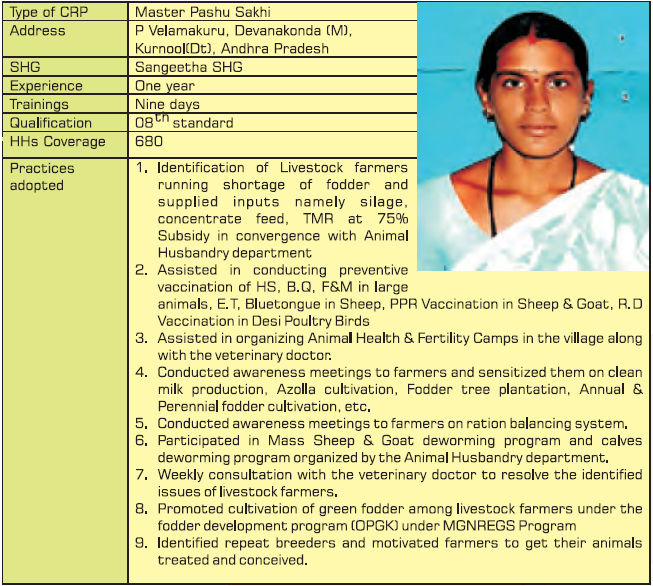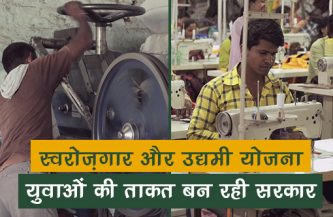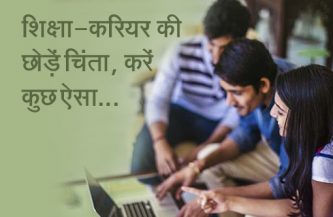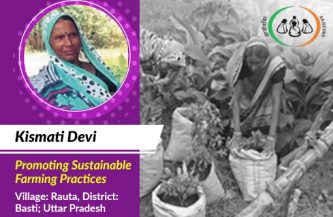Feed your livestock the way they feed your family – G.Vara Lakshmi

G Varalakshmi was born into a poor agricultural family. Poverty at home meant that she could not complete her education and was soon married off to Lakshamanna. At a very young age itself, Varalakshmi displayed the qualities of a committed and hard-working individual in all spheres of activities she was entrusted . Following her marriage, she moved to Devanakonda Mandal in Kurnool district, a region that was prone to drought. She was quick to understand the prevailing agricultural scenario in her new village. While the erratic rains impeded any agriculture in the region, fodder cultivation was considered to be an impossible scenario.

The story of Varalakshmi, the CRP had started much before when the lack of cultivation led her to explore alternative means of livelihoods. Varalakshmi opted to work as a daily wage labourer and joined the SHG to better her economic prospects. Her attitude and regularity in the meetings were rewarded with a loan. She invested this amount in purchasing ram lambs, which fetched double returns in six months. Following several cycles, she could garner enough money to purchase a milch buffalo. She could motivate fellow members in the village to opt for a ram lamb rearing. The group was motivated to even start a dairy farm of their own, but for want of fodder, they didn’t dare to do so. She was also a forerunner in the village to adopt fodder cultivation under the scheme, OPGK (Orura Pashu Grasa Kshetralu – Fodder production in every village, a unique scheme launched for promotion of fodder by AP Government).
All these attributes elevated the role of Varalakshmi, who got selected as the Livestock Community Resource Person in the year 2017. Delighted to be part of a government program, Varalakshmi worked harder with much zeal and managed to handle household chores and CRP duties without any conflict.
Well groomed and trained by the authorities, Smt Varalakshmi, started her role as CRP by conducting awareness sessions in villages during the evenings to encourage livestock rearing in the village. She was often laughed at her ideas by villagers but did not turn a blind eye toward the issues of farmers like hers and strived hard to demonstrate a successful model. She could rightly identify the problems and narrowed it down to the availability of water and fodder. Having come across farmers with water facility, she convinced them to undertake fodder production programs, after explaining to them the monetary benefits of the activity. Each of those farmers earned Rs. One lakh in a year by producing 150-200 MT of fodder.
The increased fodder production in the village prompted Varalakshmi to convince farmers into the adoption of milch animals. Villagers were willing to invest now as they were confident about the fodder availability. Slowly but steadily, the milch animal population in the village grew to 178 under the guidance of Varalakshmi. She also educated them on advanced feeding practices along scientific lines for better growth and reproduction. In convergence with the Animal Husbandry Department, 17 MT of silage, 30 MT of concentrate feed and 10 MT of Total Mixed Ration were supplied to farmers. Thus, from a meagre milk production of 50 litres per day, the village produces over 500 litres of milk every day.
The introduction of pulveriser for chaffing fodder by herself, she turned to be a role model to fellow farmers and showed the path toward fodder conservation through minimised fodder wastage. While living in a remote village that still dreams of proper bus connectivity and good roads, Varalakshmi brought in machinery to pulverize dry leaves and make protein rich leaf meal cakes put on it.
She was equally enthused about providing preventive and curative care to livestock in consultation with the Mandal Veterinary Assistant Surgeon (VAS). She administered various anti-parasitic drugs to the villagers under the guidance of VAS. She acted as the bridge between the officer and her remote village. Her analytical skills were such that she could identify sick animals before its identification by the livestock owner. Multiple camps were conducted in the village under her leadership to create awareness of feed, fodder cultivation, preventive care, treatments, etc.
Varalakshmi is the kind of all-round community resource person who could identify the local issues and suggest viable measures to tackle the same and served the community with commitment and passion. By doing this, she has not only changed her world by creating a steady source of income but has also brought the light back into the lives of the people of Devanakonda Mandal.
Special individual achievement
1) Increase in milk production in the village as a result of inputs of silage, concentrated feed; TMR supplied to the livestock farmers.
2) Increased perennial fodder cultivation by the farmers under OPGK scheme and 5 cent model.
3) High fodder yielding a variety of SuperNapier grass cultivation by the farmers in 30 Acres in the village.






